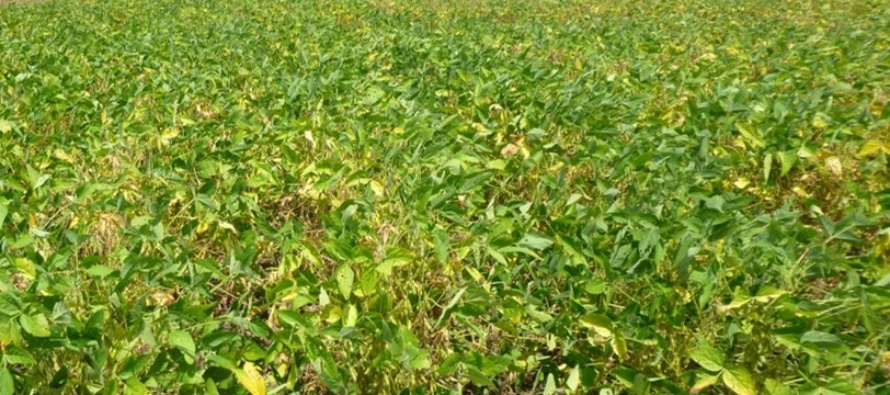Soybean Harvest Aid Considerations for 2019

Related Articles
- 2010 Soybean And Corn Variety Trial Data 3
- Flag The Technology 0
- 2011 Rice Burndown Considerations 0
Latest Tweets
As we move into September, we have had a few acres of soybean harvested, some that have already received a harvest aid, many that are getting close to maturity, and, in the case of the latest planted crop, some acres that still have a few weeks to reach the end. But, with harvest on everyone’s mind, many decisions are being made on applying harvest aids.
Keep in mind that harvest aids will not increase soybean yield, but rather work to protect the yield that has already been determined by desiccating all green material to facilitate a more efficient harvest. This year’s harvest in particular has the potential to be extra challenging with respect to how uniform our fields will drop leaves and be ready to harvest. This is due in part to the planting season challenges where we had variability in emergence across fields or for those situations where we “spot planted” into existing stands to achieve an acceptable plant population. Regardless of the cause for any greenness remaining in mature fields, harvest aids are an option to manage the potential problem. Remember, the more green material that is in the field, the longer the time required for harvest aids to achieve their goal. Another consideration is to be mindful of surrounding fields when making these applications. Neighboring fields containing younger soybean, rice, etc. could still be susceptible to yield loss if exposed to these products.
As a quick review, the following are some of the products are labeled for use as a harvest aid in soybean:
| paraquat at 0.125 to 0.25 lb ai/acre | Paraquat will provide desiccation of both weeds and soybean. The preferred application rate is 0.25 lb ai/acre. A nonionic surfactant (0.25% V/V) should be included. For paraquat, a 15 day preharvest interval is required.
|
| Sharpen at 1 to 2 fl oz/acre | Sharpen will provide desiccation of broadleaf weeds and soybean. The addition of a methylated seed oil (1% V/V) plus ammonium sulfate (1 to 2% W/V) is recommended for optimum desiccation. Application rates of 1.5 to 2 fl oz/acre are generally required when Sharpen is applied alone. This product has a 3 day preharvest interval.
|
| sodium chlorate at 6 lb ai/acre | Sodium chlorate will also provide desiccation of weeds and soybean. However, the level of activity from this application will depend on environmental conditions at the time of application. Keep in mind that sodium chlorate is a true desiccant and will physically draw moisture out of plant tissues and seed. With that in mind, sodium chlorate should be applied 7 to 10 days before harvest. |
Additional products labeled for use as a harvest aid in soybean include Aim EC and glyphosate, both of which would be more suited for weed management in preparation for harvest rather than as a desiccant for the crop itself. For more information products for use as harvest aids in soybean, please see the 2019 Weed Management Suggestions for Mississippi Row Crops.
With respect to harvest aid application timing, consideration should be given to both forecasted weather conditions and crop stage. The weather forecast is an essential consideration before making a harvest aid application as certain environmental conditions may influence the time required for proper desiccation while also dictating when harvest can occur due to wet field conditions. In addition to expected weather conditions, the preharvest interval of the applied product(s) may also influence the timing of an application. Remember, as previously stated, the more green material present in the field the longer the time required for full desiccation to reach the point ready for harvest. Regarding the stage of crop, it is best to focus on the pods rather than the leaf color of the crop. If the majority of the pods in the field are mature with the remaining pods having seed completely separated from the pod wall, it is safe to apply a harvest aid. In addition, a greater application volume is recommended when making a harvest aid application in soybean, as coverage is essential.




Let me tell You a sad story ! There are no comments yet, but You can be first one to comment this article.
Write a comment